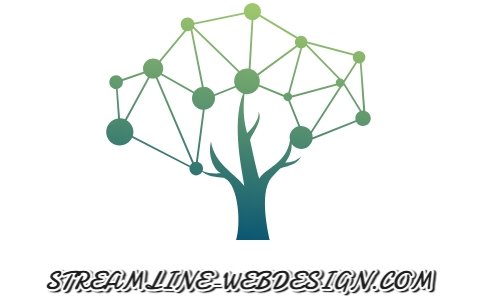
Meta’s recent decision to revert back to the blue Messenger logo has left many scratching their heads, stirring confusion, frustration, and a hefty dose of disbelief. After years of embracing a vibrant purple and pink gradient that symbolized the company’s push for modernization and innovation, the sudden shift to a more traditional blue logo has raised questions about Meta’s direction—both in terms of design and corporate identity.
So, what prompted this bold U-turn? Why now, when the company is already struggling to stay relevant amid mounting controversies and a public relations nightmare? Meta’s timing couldn’t be worse. This logo change, especially when paired with Zuckerberg’s more conservative stances and the company’s ongoing reputation woes, feels like a step backward. And the timing of it all suggests a deeper crisis—one that goes beyond just logos.
From Bold and Vibrant to Safe and Stale
In 2020, Meta—still known as Facebook at the time—unveiled a new logo for Messenger that embraced a fun, gradient color scheme. The lively purple and pink tones were seen as a bold departure from the more corporate aesthetics that had defined the platform for years. The gradient signaled a fresh, youthful vibe that aligned with Meta’s desire to integrate its various platforms, like Facebook and Instagram, and present itself as a modern, dynamic social entity.
Fast forward to 2025, and the new-old blue logo now feels like a desperate attempt to embrace nostalgia—or worse, an effort to distance itself from the progressivism that the colorful gradient once represented. The shift in design is jarring, and its implications go beyond mere aesthetics. In a world where brand identity and perception are everything, this kind of flip-flopping behavior signals uncertainty and confusion.
Meta is a company that’s been in crisis mode for a while now. The past few years have been marked by scandals, including privacy breaches and political controversies. In that environment, any change—especially one as visible as a logo update—becomes a symbol of much more than just a cosmetic shift. For Meta, this feels less like an intentional redesign and more like a reaction to ongoing struggles, a way to try to salvage a sense of identity in an increasingly fractured landscape.
A Branding Misstep with Deeper Implications
The decision to go back to blue isn’t just about aesthetics—it’s a branding blunder of monumental proportions. The gradient, which once represented Meta’s attempt at being a vibrant, forward-thinking company, is now replaced with the safe, corporate blue that screams “status quo.” Critics are quick to point out that this move feels lazy and uninspired. In an industry that thrives on innovation, the switch back to a more “basic” logo comes across as a retreat into the comfort of the past.
But perhaps the biggest issue isn’t just the design itself, but the message it sends about Meta’s internal struggles. The logo flip symbolizes a deeper crisis of identity for the company. Meta was once the beacon of innovation—pushing boundaries with Facebook, Instagram, and ambitious plans for the metaverse. But with each misstep, including this latest branding decision, it feels like the company is losing its grip on its once-consistent narrative.
In branding, consistency is key. Users and investors alike crave a sense of stability and clarity. When a company changes direction so drastically—especially in such a visible way—it sends a mixed message. Meta’s reversion to blue might be seen as a conservative move, a return to safety, but it also reflects a company that seems to be floundering, unsure of who it is or what it stands for.
The Zuckerberg Factor: Flip-Flopping Leadership
At the heart of this branding debacle is Mark Zuckerberg himself, whose flip-flopping approach to leadership has contributed to Meta’s growing identity crisis. From data privacy scandals to his dramatic pivot towards the metaverse, Zuckerberg has shown time and again that he is willing to abandon earlier promises and shift his priorities depending on the political or financial pressures he faces. This tendency to change course on a whim only fuels public confusion and undermines any sense of trust that users or investors might have in the company.
The Messenger logo switch feels like another example of Zuckerberg’s constant quest to realign Meta’s image. But this time, the move doesn’t just feel like a corporate strategy—it feels like a response to a larger, more chaotic narrative that Meta is struggling to control. Whether it’s pulling fact-checking from Facebook or aligning more closely with right-wing political ideologies, Zuckerberg’s attempts to steer the ship in new directions often come across as reactionary rather than strategic.
User Backlash and the ‘Basic’ Problem
For many users, the shift back to the blue logo is more than just a cosmetic change; it’s a symbolic step backwards. The gradient logo represented something new, something fresh. It was a nod to a more progressive, dynamic version of Meta. But now, with the return to a safe blue logo, Meta seems stuck in the past, unable to push forward into the future with the same boldness it once embraced.
Critics have labeled the new-old blue design as “basic” and “uninspired,” which, in the fast-paced tech world, is a death sentence. If Meta can’t even get a logo right, what else is it messing up? The backlash has been swift, with many pointing out that Meta’s failure to embrace innovation in its branding is indicative of larger issues within the company.
A Company in Crisis
While the logo change might seem like a minor design issue to some, for Meta, it’s a glaring signal of a company in turmoil. This flip-flopping decision is the latest in a long line of missteps that have painted Meta as a company unsure of its identity and purpose. With each new move, it becomes increasingly clear that Meta is struggling to regain the trust of its users, investors, and the public.
The bottom line is simple: Meta’s branding disaster isn’t just about a logo—it’s about a company that’s lost its way. In an age where every decision is scrutinized, Meta’s identity crisis is becoming impossible to ignore. The question now is: Can the company get back on track, or is it doomed to continue stumbling in search of a coherent brand? For now, the answer is uncertain—but one thing is clear: Meta needs more than a logo change to solve its deeper, systemic issues.











